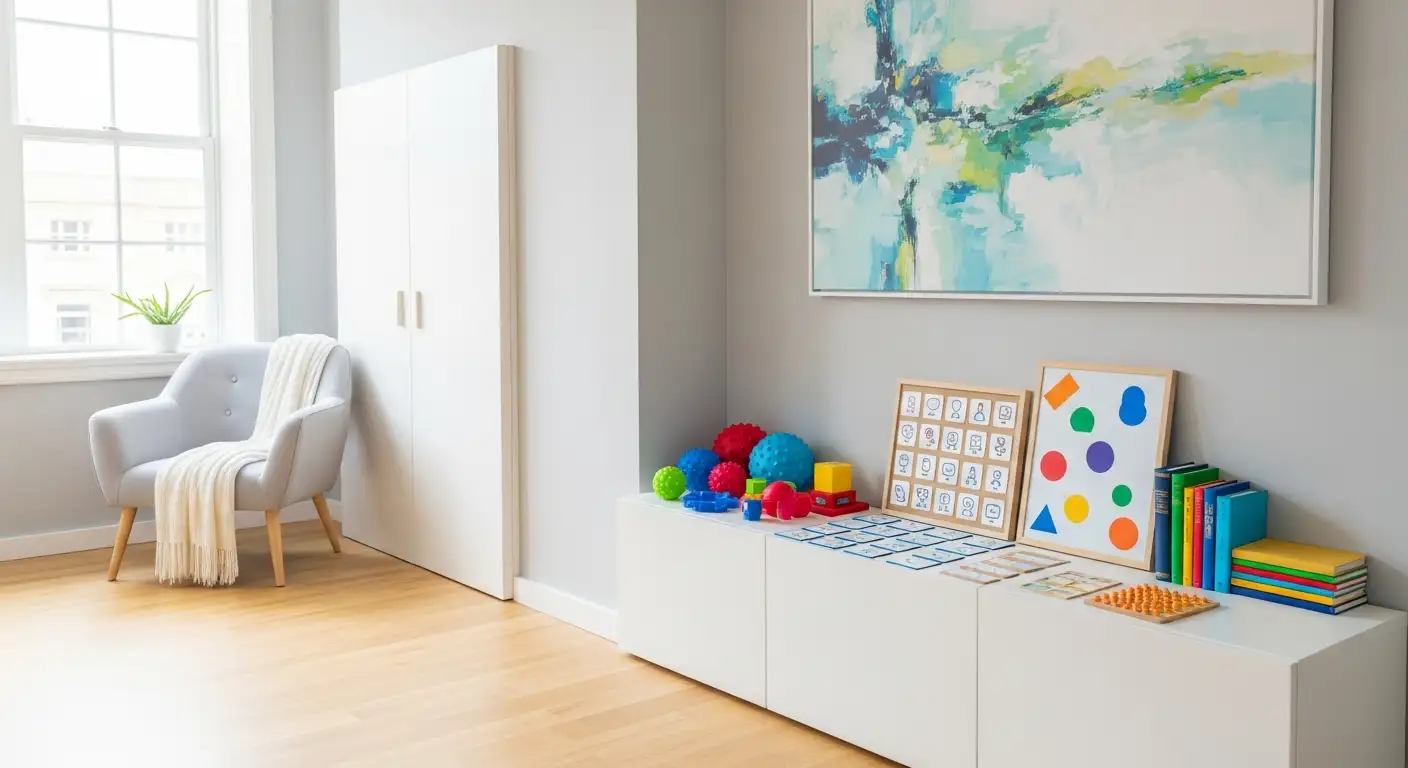Understanding Play Therapy in Autism Treatment
Play therapy is emerging as a versatile approach to support children with autism spectrum disorder (ASD). Rooted in the natural language of play, this therapeutic method leverages children’s interests to foster emotional, social, and communicative growth in a safe, engaging environment. This article delves into what play therapy entails for autism, the techniques involved, and the benefits it can offer as part of a comprehensive treatment plan.
Defining Play Therapy for Autism
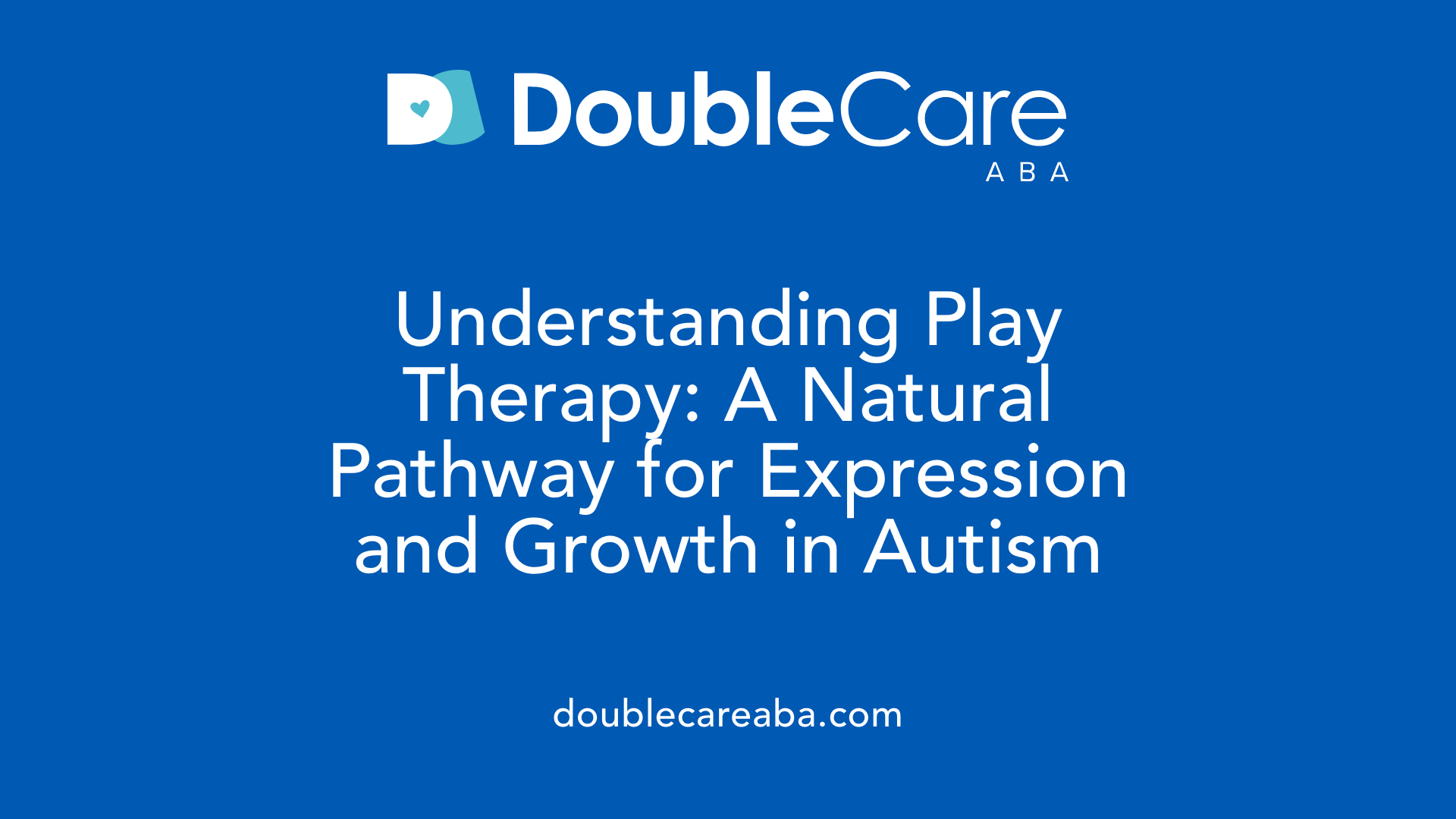
What is play therapy for autism?
Play therapy for autism is a specialized approach that uses play activities—such as pretend play, art, and interactive games—to help children express their emotions, develop social skills, and improve communication. It is often tailored to the child's interests and developmental level, employing methods like child-centered play therapy or structured play activities to target specific challenges.
This therapy provides a safe, engaging environment where children can practice social interaction, emotional regulation, and problem-solving in a natural way. Techniques like Floortime, JASPER, and social skills groups through play are commonly used to foster relationships and enhance functional communication.
Children with autism often face difficulties in expressing themselves and building social connections. Play therapy helps bridge this gap by encouraging self-expression and creativity through games, pretend scenarios, and art activities. Therapists observe children’s play patterns, guiding and supporting them as they explore their feelings and interactions.
Overall, play therapy aims to support autistic children in building essential skills while promoting their enjoyment and confidence in expressive and social activities.
Core Techniques and Methods in Play Therapy
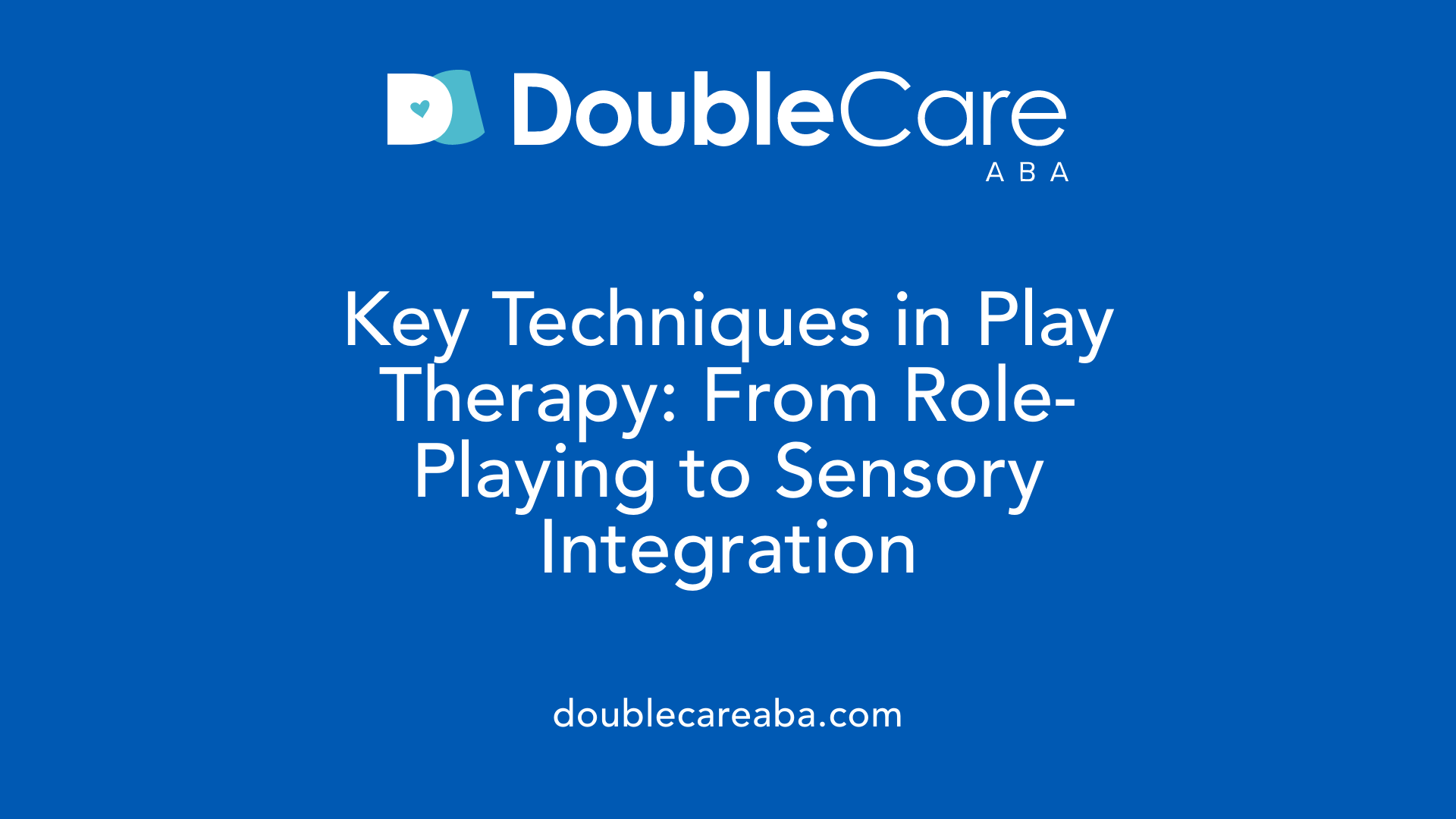 Play therapy for children with autism encompasses a diverse range of techniques designed to meet the individual needs and interests of each child. Among the most common methods are role-playing, sensory play, and art activities. Role-playing helps children practice real-life social scenarios, improving their understanding of social cues and emotional responses. Sensory play involves activities that stimulate the senses, such as textured toys, sensory bins, or tactile art projects, which can help regulate sensory processing difficulties often experienced by children with autism.
Play therapy for children with autism encompasses a diverse range of techniques designed to meet the individual needs and interests of each child. Among the most common methods are role-playing, sensory play, and art activities. Role-playing helps children practice real-life social scenarios, improving their understanding of social cues and emotional responses. Sensory play involves activities that stimulate the senses, such as textured toys, sensory bins, or tactile art projects, which can help regulate sensory processing difficulties often experienced by children with autism.
Art activities, including drawing, painting, and creative storytelling, provide children with alternative modes of self-expression, fostering confidence and emotional exploration. These techniques are often integrated into a broader approach tailored to the child's developmental level.
Specific therapeutic models further enhance these techniques. Floortime, a relationship-based approach, encourages therapists to follow the child's lead, engaging in play that promotes emotional growth and communication. Sensory integration therapy focuses explicitly on helping children process sensory information more effectively, often using specialized equipment and activities.
Another notable approach is equine therapy, where children interact with horses under professional supervision. This form of therapy helps improve social skills, reduce anxiety, and promote emotional regulation through the calming influence of animals.
Play therapy techniques can be either unstructured (child-led and exploratory) or structured (goal-oriented and facilitator-led). Child-led strategies foster a safe space where children choose activities that interest them, encouraging spontaneous communication and creative problem-solving. Structured methods might involve specific play activities aimed at developing particular skills, such as turn-taking or emotion identification.
Therapists often use a combination of these approaches, employing toys, puzzles, puppets, and interactive games to foster engagement. Parent participation is a vital component, allowing for reinforcement of skills learned during therapy sessions at home.
In summary, play therapy employs a toolkit of techniques—ranging from simple sensory and art activities to complex, relationship-based approaches—to support emotional, social, and developmental growth in children with autism.
Benefits and Effectiveness of Play Therapy

What are the benefits and effectiveness of play therapy for children with autism?
Play therapy provides a powerful way to support children with autism by fostering a sense of comfort and self-expression through preferred play activities. It enables children to communicate and explore their environment in ways that are natural and engaging, which is particularly helpful given the communication and social challenges common in autism spectrum disorder (ASD).
One of the main benefits of play therapy is its ability to improve social and emotional skills. Children learn to take turns, understand non-verbal cues, and develop emotional regulation within a safe, supportive setting. This approach can also help reduce maladaptive behaviors such as aggression, self-injury, or withdrawal by redirecting children to more appropriate, non-injurious activities.
Different types of play therapy, including child-centered, floortime, and sensory integration, have shown promise in addressing core ASD issues like joint attention, pretend play, and social responsiveness. For example, floortime encourages children to follow their interests and build emotional connections, while sensory-based activities help regulate sensory processing difficulties.
Although current research is limited, existing studies—many of which are case studies—indicate small but meaningful improvements in social engagement and play interactions. These gains include better peer interaction, increased eye contact, and enhanced ability to express feelings. Importantly, tailored interventions that match each child's individual profile tend to be more successful.
Research suggests that play therapy can also promote emotional development, build trust with caregivers and therapists, and motivate children to participate in social environments outside therapy. When integrated with other approaches like speech therapy and occupational therapy, play therapy can be part of a comprehensive, holistic treatment plan.
While more rigorous and large-scale scientific studies are necessary to confirm definitive effectiveness, the existing evidence highlights the potential for play therapy to serve as an accessible, engaging, and developmentally appropriate intervention. Its child-centered nature promotes natural learning and growth, making it a valuable component in supporting children with autism towards greater independence and emotional well-being.
How Play Therapy Fits into Autism Treatment Models

How does play therapy work and what is its role in autism treatment?
Play therapy is a child-centered approach that uses play as a natural and powerful medium for children with autism to express themselves, learn, and grow. Rather than relying on direct instructions, play therapy involves engaging children in fun, meaningful activities they choose, such as pretend play, sensory activities, or art-based exercises. This environment allows children to feel safe and comfortable, encouraging them to share their feelings and develop social and emotional skills.
Through various modalities—like Floortime, sensory integration, or social skills groups—therapists can help children explore different ways of interaction, improve communication, and develop emotional regulation. Despite limited scientific evidence, initial case studies suggest that effective play therapy can increase social engagement, foster creativity, and help children build trust. These foundational skills are crucial for overall development.
How does it encourage expression and social skills?
One of the main strengths of play therapy is its ability to facilitate emotional expression and social interaction. By engaging in activities of their interest, children learn to communicate their feelings nonverbally and develop an understanding of social cues. Play provides an intuitive and non-threatening environment for children to practice turn-taking, sharing, and understanding nonverbal language.
Child-led approaches like Floortime emphasize following the child's lead, which naturally promotes motivation, confidence, and trust. Activities crafted around the child’s preferences often lead to spontaneous interactions, laying the groundwork for improved social relationships and emotional intelligence.
How does it complement other therapies like ABA and speech therapy?
Play therapy complements structured interventions such as Applied Behavior Analysis (ABA) and speech therapy by addressing different developmental areas. While ABA employs systematic reinforcement strategies to teach specific behaviors and skills, play therapy enhances spontaneous social behaviors, creativity, and emotional understanding.
In combination, these therapies provide a holistic approach—ABA focusing on skill acquisition and reducing problematic behaviors, and play therapy fostering emotional connections and social motivation. Speech therapy benefits from the emotional and social foundation built during play sessions, which can make language learning more meaningful and effective.
What is its role in promoting trust and motivation?
Building trust is fundamental in therapy with children with autism, and play therapy excels at establishing a direct, engaging, and enjoyable connection. When children feel safe and accepted during play, they develop a sense of control and confidence. This positive emotional experience motivates children to participate more actively.
Furthermore, play therapy encourages children to explore and learn at their own pace, enhancing their motivation to engage. As trust and motivation grow, children become more receptive to other interventions, making play therapy a valuable component within a comprehensive autism treatment plan.
Varieties and Models of Play Therapy for Autism
 Play therapy for children with autism includes a range of approaches tailored to meet diverse developmental needs. These variations aim to improve social, emotional, communication, and motor skills through engaging and meaningful activities.
Play therapy for children with autism includes a range of approaches tailored to meet diverse developmental needs. These variations aim to improve social, emotional, communication, and motor skills through engaging and meaningful activities.
Child-centered play therapy (CCPT) is relationship-based, allowing children to lead the pace and content of play. This nurtures trust and emotional growth, encouraging children to express themselves freely. Structured play therapy incorporates specific techniques like role-playing and social stories to target particular skills such as turn-taking, problem-solving, and emotion recognition.
Sensory-based play utilizes tactile, visual, and auditory activities to help children regulate sensory processing challenges common in autism. These activities can include sensory bins, textured toys, or swinging, facilitating comfort and focus.
The Floortime model emphasizes following the child's lead in play and building emotional connections. It aims to foster spontaneous communication, joint attention, and social development by engaging children in play that interests them.
JASPER (Joint Attention, Symbolic Play, Engagement, and Regulation) is a targeted approach designed to improve focus on objects and people, promote pretend play, and enhance social skills. It involves repeated, playful interactions that reinforce shared attention and emotional regulation.
Group play therapy offers peer interactions through structured or free-form play sessions. These groups help children practice social skills like sharing, turn-taking, and understanding social cues in a naturalistic setting.
Different types of play therapy are chosen based on the child's age, interests, and skill deficits. For example, sensory-based methods may benefit children needing sensory regulation, while Floortime supports emotional and relational development.
Using these varied approaches ensures a comprehensive, personalized intervention strategy. They all focus on engaging children in enjoyable activities, which can lead to better communication, reduced anxiety, and higher social engagement.
In summary, these models highlight the importance of individualized, child-led activities that promote emotional expression, social skills, and developmental growth. Combining different play therapy types under professional guidance maximizes the potential benefits for children with autism.
Scientific Evidence and Research
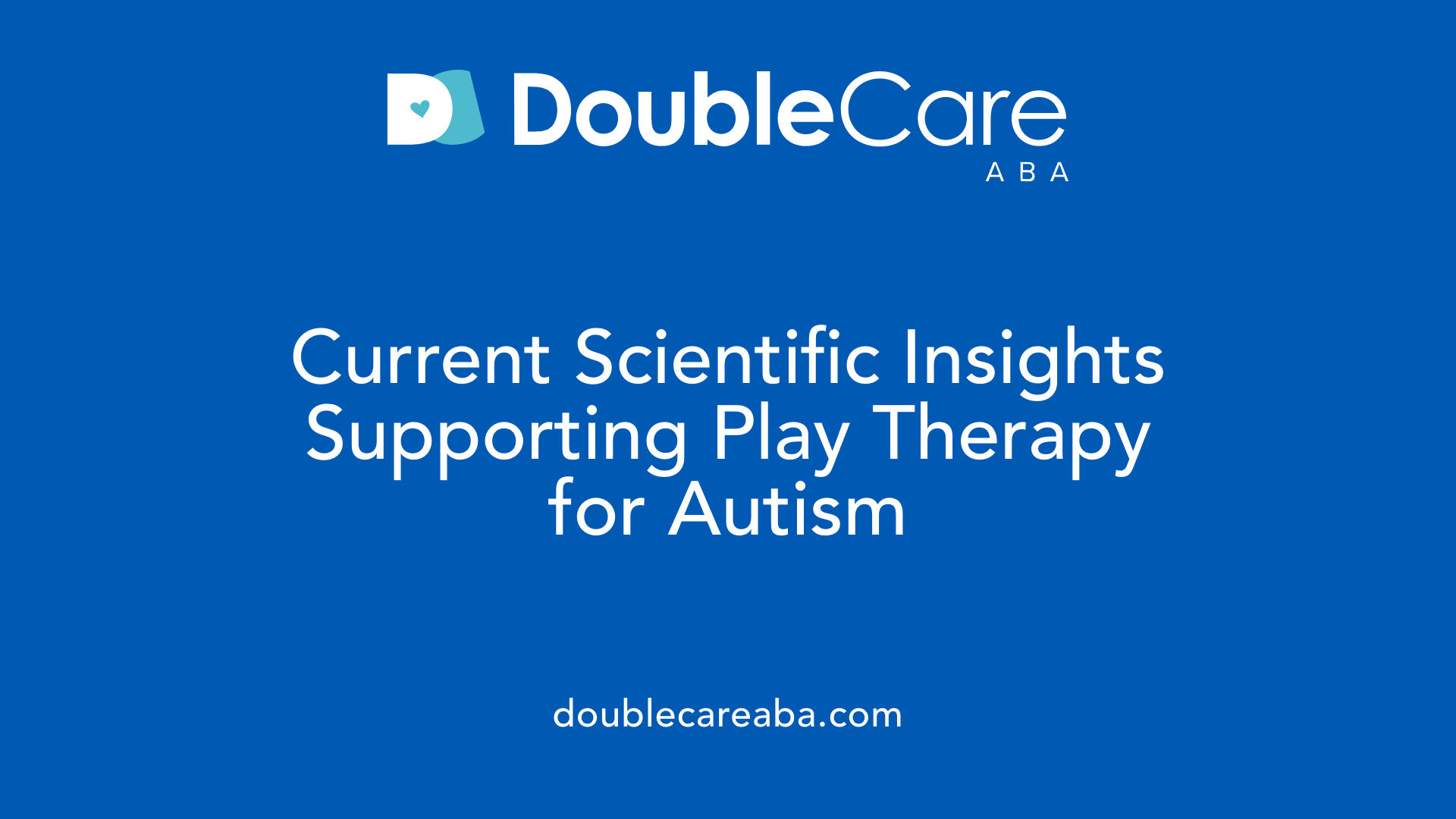
What scientific evidence supports the use of play therapy for autism?
Research into play therapy for children with autism is still limited, but existing studies suggest it holds promise. Many small-scale case studies and initial research efforts point to benefits such as improved social engagement, emotional regulation, and reduction of maladaptive behaviors.
For example, some studies have observed increases in social interaction and play skills following play therapy interventions. A notable randomized controlled trial examined child-centered play therapy (CCPT), finding that children showed reduced emotional and behavioral challenges after just eight to twelve sessions. EEG measures indicated increased relaxation, suggesting a calming effect and emotional comfort.
Furthermore, longer-term interventions like 3i play therapy have demonstrated meaningful decreases in autism severity scores over two years, with improvements in core behavioral areas such as communication, social skills, and adaptive behaviors. These approaches align with neurobiological theories that engaging children in meaningful, child-led activities can foster neural connectivity and support brain development.
While current evidence does not yet allow for definitive conclusions, it underscores the potential of play therapy as an effective component in a comprehensive autism treatment plan. The modalities used—ranging from sensory integration to relationship-based approaches like Floortime—are rooted in understanding typical child development and seek to enhance neuroplasticity, emotional regulation, and social cognition.
It is important to highlight that many of these studies, mainly case reports and small samples, lack the rigorous controls necessary for high-level evidence. This emphasizes the need for more large-scale, randomized studies that could confirm and deepen our understanding of play therapy's overall efficacy.
Despite these limitations, the neurodevelopmental benefits implied by emerging research support integrating play therapy into multidisciplinary treatment strategies. It offers a flexible, engaging approach that aligns with children’s natural communication and expressive tendencies, making it a promising option worthy of further scientific exploration.
Implementation, Parent Involvement, and Setting
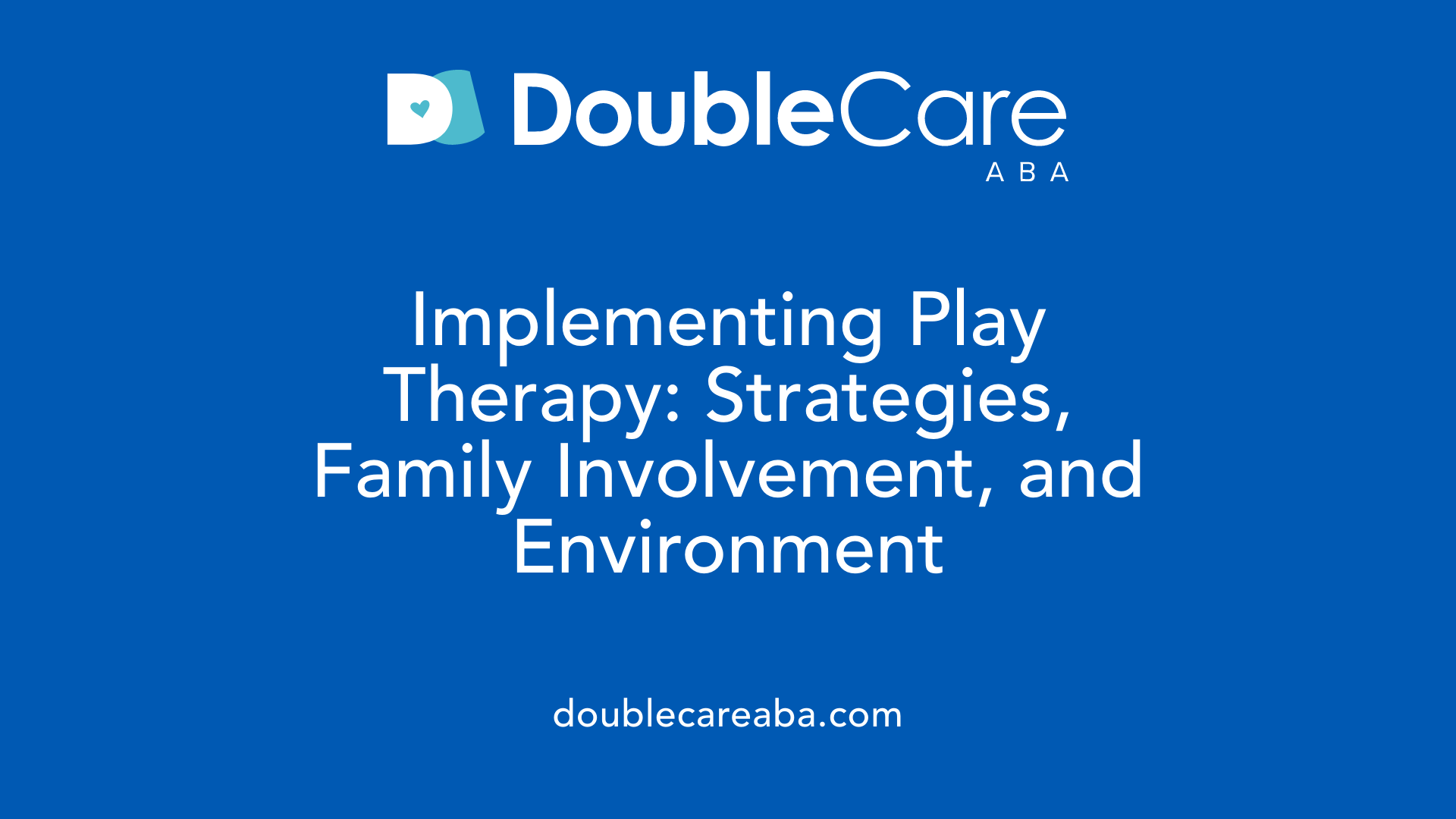
How is play therapy applied and implemented for autistic children?
Play therapy for children with autism is tailored to each child's unique needs and involves various approaches such as child-centered, directive, sensory-based, or a combination thereof. Qualified therapists assess the child's developmental level, emotional state, and specific challenges before designing an individualized treatment plan.
In practice, therapists utilize a wide range of play activities, including imaginative pretend play, art, sensory integration exercises, and social stories. These activities promote essential skills like communication, social interaction, and emotional regulation. During sessions, the therapist creates a safe, supportive environment where children feel comfortable expressing themselves through play.
Sessions often include observation, goal setting, and specific techniques such as role-playing, visual aids, or sensory play. Depending on the child's responses, the therapist may adapt activities in real time, fostering a natural and engaging interaction that encourages self-expression. Strategies like incorporating technology or interactive tools are also emerging as effective methods.
Implementation might involve weekly or bi-weekly sessions lasting around 30 to 50 minutes. Therapists aim to facilitate spontaneous and meaningful interactions that reflect the child's interests and developmental stage, making therapy both effective and enjoyable.
Role of qualified therapists
Specialized play therapists are trained in child development, autism spectrum disorders, and various therapeutic approaches. Their expertise ensures that activities are appropriate, engaging, and aimed at fostering growth. They monitor progress, adjust strategies as needed, and work collaboratively with families and other professionals.
Therapists also use observation to identify areas requiring additional support and to measure improvements over time. Their role extends beyond direct sessions, as they often provide guidance to parents and caregivers to facilitate ongoing development.
Family participation and home exercises
Family involvement plays a vital role in the success of play therapy. Parents and guardians are encouraged to participate actively, learn therapeutic techniques, and incorporate play activities into daily routines. This participatory approach strengthens the parent-child relationship and reinforces skills learned during therapy.
Home exercises might include pretend play, sensory activities, turn-taking games, and emotion recognition tasks that parents can easily integrate into everyday life. These activities promote consistency, generalization of skills, and deeper emotional connections.
Moreover, involving families fosters a supportive environment where children feel secure and motivated to engage in new behaviors. Regular communication between therapists and families ensures that therapy goals remain aligned and that progress is sustained outside clinical settings.
| Aspect | Description | Additional Notes |
|---|---|---|
| Application | Child-centered, sensory, or structured approaches | Tailored to individual needs |
| Techniques | Play, art, sensory activities, role-playing | Incorporates visual aids, technology |
| Therapist Role | Assessment, planning, guiding, observing | Family collaboration advised |
| Family Involvement | Active participation, home activities | Reinforces therapy, fosters bonding |
| Session Duration | Typically 30-50 minutes | Usually weekly or bi-weekly |
Effective implementation of play therapy for children with autism relies on skilled practitioners and active family involvement. When executed properly, it can significantly support emotional, social, and behavioral development—helping children express themselves in comfortable and meaningful ways.
Comparison with Other Interventions and Final Considerations
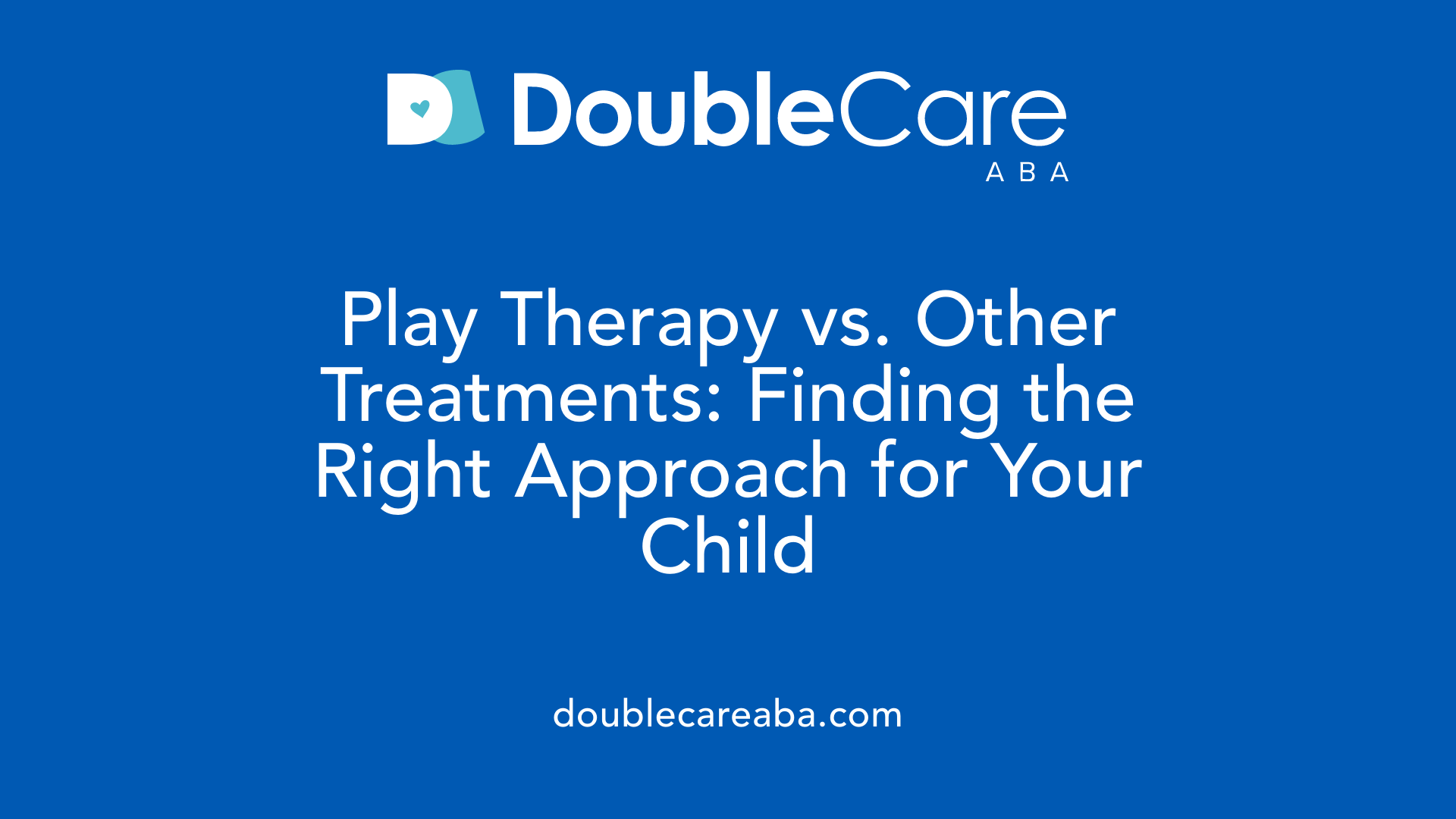
How does play therapy compare with other approaches like ABA therapy?
Play therapy and Applied Behavior Analysis (ABA) are distinct yet complementary interventions for children with autism. ABA is a highly structured, evidence-based approach focused on identifying behaviors, analyzing triggers, and systematically reinforcing desired skills such as communication, social interactions, and daily living tasks. It employs techniques like positive reinforcement and skill chaining to train specific behaviors.
Conversely, play therapy utilizes a child-led, flexible approach centered on using play as a natural language for emotional expression and social development. It aims to foster emotional regulation, build trust, and encourage spontaneous social interactions through activities like pretend play, sensory play, and creative arts.
While ABA targets measurable behavioral improvements with clear outcomes, play therapy offers a safe space to explore feelings, develop social-emotional skills, and improve non-verbal communication. Both approaches can be integrated into a holistic treatment plan, addressing behavioral challenges and emotional needs simultaneously.
Can combining different therapeutic approaches be beneficial?
Yes, combining play therapy with other interventions such as ABA and speech therapy can enhance overall effectiveness. For example, ABA can effectively teach functional skills and reduce maladaptive behaviors, while play therapy can improve trust, emotional regulation, and social interaction.
Integrated therapies allow for addressing multiple aspects of autism, catering to the child's unique needs. Family involvement in play therapy further supports skill generalization to home and community environments. The combined use of approaches often results in a more balanced development of cognitive, social, behavioral, and emotional skills.
Why is individualized treatment planning important?
Every child with autism is unique, with different strengths, challenges, and preferences. Personalized treatment plans that incorporate assessments, family input, and ongoing progress monitoring are essential to select suitable therapies and tailor activities.
A well-planned intervention considers the child's developmental level, communication abilities, emotional state, and interests. Whether combining therapies or focusing on one approach, individualized planning ensures the most relevant, engaging, and effective support.
By respecting each child's pace and preferences, clinicians can foster a positive therapeutic environment that encourages growth, confidence, and resilience.
| Approach | Focus | Techniques & Modalities | Suitability |
|---|---|---|---|
| Play Therapy | Emotional and social growth | Pretend play, sensory activities, art, storytelling | Children needing emotional support, trust-building, social skills |
| ABA Therapy | Behavioral skills | Reinforcement, task analysis, systematic skill training | Children needing behavior management, skill development |
| Combined Approach | Overall development | Both play-based and structured techniques | Children with complex needs requiring comprehensive intervention |
Understanding the differences, potential complementarities, and importance of tailored interventions helps clinicians, parents, and caregivers choose the most suitable pathways to support children with autism effectively.
Supporting Growth and Development through Play
Play therapy emerges as a promising, child-centered modality that enhances emotional and social development in children with autism. While current scientific evidence underscores its potential, further rigorous research is essential to establish definitive efficacy. Integrating play therapy within a multidisciplinary treatment plan, alongside approaches like ABA and speech therapy, can holistically support children’s growth. Finding qualified play therapists through reputable associations and specialized programs ensures that children receive expert care tailored to their unique needs. Ultimately, play therapy not only improves core skills but also nurtures confidence, trust, and happiness — essential foundations for lifelong development.
References
- Play therapy in children with autism: Its role, implications, and ...
- Is Play Therapy an Evidenced-Based Intervention for Children with ...
- Play Therapy For Autism: What Parents Need to Know - Blue ABA
- Play Therapy for Autism: Benefits, Techniques & Tips - Forbrain
- Play therapy in children with autism: Its role, implications, and ...
- Play Therapy's Role in Pediatric Autism Services for Kids
- ABA Therapy vs. Play Therapy: Choosing the Right Approach for ...





